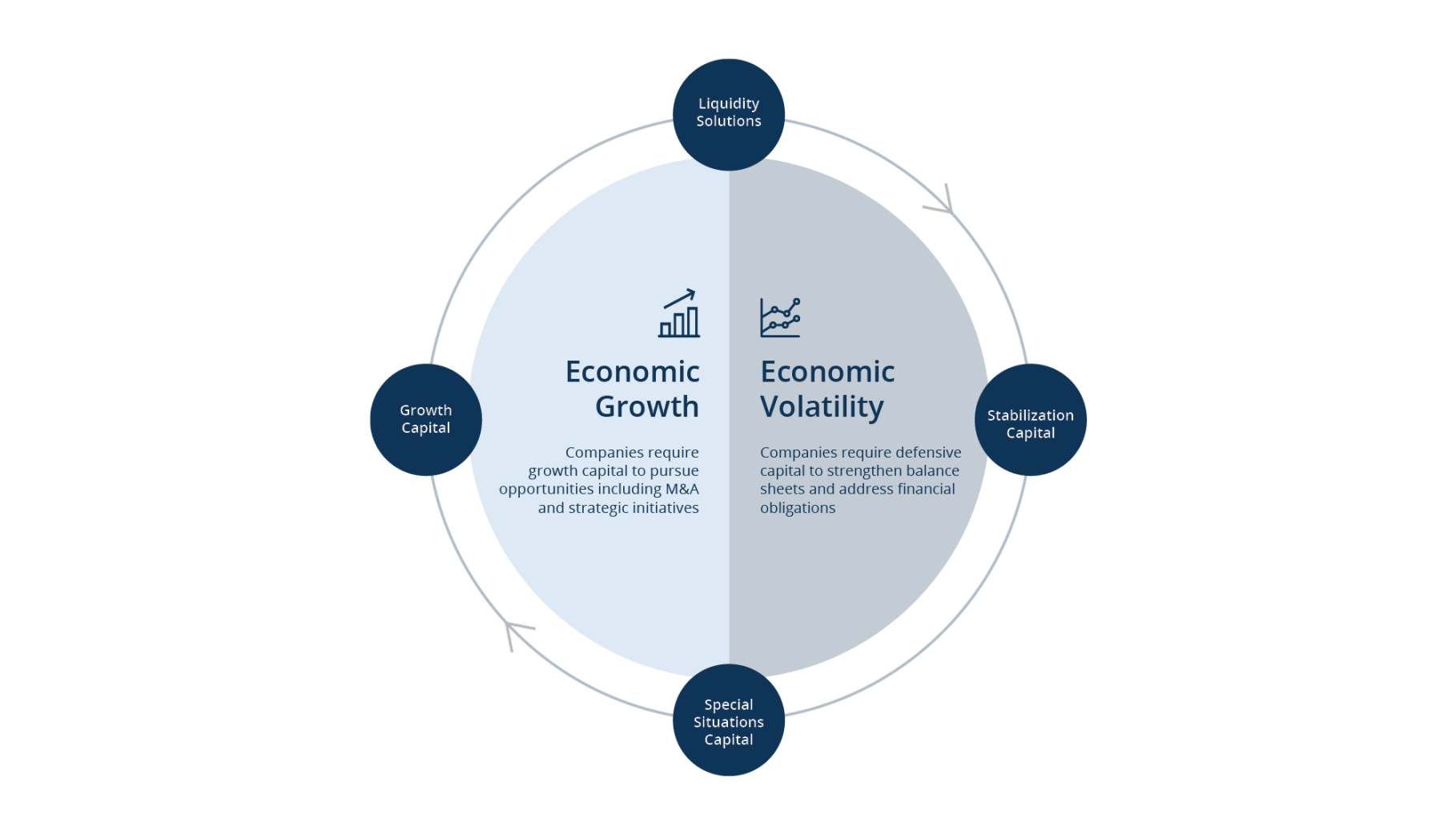Introduction
Markets and economies move up and down. But no matter where they are in the cycle, companies will always need capital—whether it’s to spur growth, shore up their defenses or access liquidity to support their corporate initiatives (see Figure 1).
Since the global financial crisis, it has been more difficult for companies to access traditional forms of capital. And while the private markets increasingly have filled the void, flexible capital solutions have emerged as a strong alternative for companies with specific needs.
Flexible capital is a global, all-weather solution that sits between private credit and private equity. The key is customization: A company teams up with a strategic partner who provides alternative sources of capital to help execute its vision.
For investors, it combines the essential elements of both debt and equity in a hybrid, tailored investment structure with a focus on strong downside protection, along with upside potential tied to equity performance.





